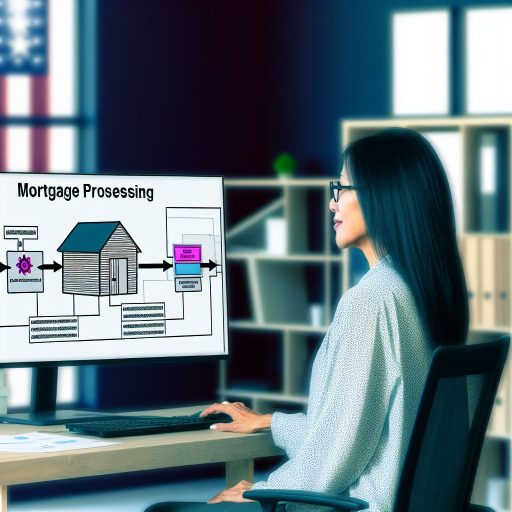Introduction to IoT Home Surveillance
Importance of Home Surveillance
Home surveillance has become essential for property protection.
It offers peace of mind for homeowners and renters alike.
Security systems deter potential intruders effectively.
Additionally, they provide real-time monitoring capabilities.
Families can prioritize safety through enhanced surveillance.
Emergency response becomes quicker with these systems in place.
Several studies show a decline in crime rates in monitored areas.
Current Trends in IoT Home Surveillance
The Internet of Things (IoT) has transformed security systems.
Smart cameras and sensors integrate easily into homes.
These devices connect via Wi-Fi for remote access.
Homeowners can monitor their properties from anywhere.
Many systems now utilize artificial intelligence for enhanced detection.
Some cameras can distinguish between people and objects.
Furthermore, technology has improved night vision capabilities.
Mobile alerts keep homeowners informed about suspicious activities.
Benefits of IoT Home Surveillance Systems
IoT systems offer numerous advantages over traditional methods.
They provide real-time video streaming to users’ devices.
Many are equipped with two-way audio for communication.
Smart home integration allows control through voice commands.
Remote access maximizes convenience for users.
Furthermore, they often come with cloud storage options.
Users can review footage anytime and from anywhere.
Challenges and Considerations
Despite their benefits, IoT surveillance systems face challenges.
Cybersecurity threats pose significant risks to user privacy.
Consequently, it’s vital to choose secure devices.
Additionally, users should regularly update their software.
Some systems may require a reliable internet connection.
Users must consider ongoing costs for monitoring services.
Lastly, ensuring proper placement of cameras is essential.
Key Components of IoT Home Surveillance Systems
Smart Cameras
Smart cameras form the backbone of IoT home surveillance systems.
These devices transmit real-time video over the internet.
Moreover, they often include features like motion detection and night vision.
Users can access footage from anywhere using smartphones or computers.
Some models even support cloud storage for video archives.
Remote Monitoring
Remote monitoring enhances security by allowing users to check their homes anytime.
This feature is crucial for homes in isolated areas.
Users can receive alerts when unusual activity is detected.
Video feeds are accessible via dedicated apps or web portals.
Additionally, seamless integration with other smart devices is possible.
Smart Sensors
Smart sensors offer an extra layer of protection for your property.
These include motion sensors, door/window sensors, and glass break detectors.
They alert homeowners to potential intrusions without needing cameras.
Wireless connectivity allows them to communicate directly with smart hubs.
As a result, they provide quick responses to security breaches.
Mobile Applications
Mobile apps serve as the control center for IoT home surveillance systems.
These apps allow users to control cameras and sensors remotely.
They streamline notifications and offer access to recorded footage.
In addition, intuitive interfaces make it easy to manage various devices.
Most apps are compatible with both iOS and Android platforms.
Integration with Home Automation Systems
Integrating surveillance systems with home automation boosts security significantly.
Smart lighting and locks can synchronize with surveillance triggers.
For example, lights can automatically turn on when motion is detected.
This deters intruders while ensuring user convenience.
Furthermore, homeowners can create customized security routines for different scenarios.
Data Security
Data security is essential in IoT home surveillance systems.
Encryption protects video feeds and personal information from breaches.
Users should choose systems with robust security protocols.
Regular software updates help safeguard against vulnerabilities.
Additionally, secure password management practices are crucial for users.
Benefits of IoT Home Surveillance for Property Protection
Enhanced Security
IoT home surveillance systems provide round-the-clock monitoring.
This constant vigilance helps prevent unauthorized access.
Moreover, real-time alerts notify homeowners of potential dangers.
Remote Access and Control
Homeowners can view live feeds from their devices anywhere.
This accessibility empowers users to monitor their property on the go.
Additionally, remote control features allow for quick responses.
Cost-Effectiveness
IoT surveillance systems reduce the need for extensive security personnel.
Consequently, homeowners can save money in the long run.
Furthermore, many systems offer affordable subscription plans.
Integration with Smart Home Devices
IoT systems often seamlessly integrate with other smart devices.
Examples include smart locks, lights, and alarms.
This integration provides comprehensive home automation solutions.
As a result, homeowners can enhance their property’s security easily.
Data Storage and Analysis
Many IoT surveillance systems offer cloud storage options.
This feature allows for easy access to recorded footage.
Moreover, advanced analytics help identify suspicious activities.
Thus, homeowners can make informed security decisions.
You Might Also Like: Why Virtual Reality is Changing the Way Buyers Tour Homes
Comparative Analysis: IoT Surveillance vs. Traditional Security Systems
Understanding IoT Surveillance
IoT surveillance utilizes internet-connected devices for monitoring.
These devices include cameras, alarms, and sensors.
They provide real-time data to homeowners and security professionals.
Moreover, IoT systems allow remote access and management.
This innovation enhances situational awareness significantly.
Defining Traditional Security Systems
Traditional security systems rely on physical devices for protection.
Common elements include locks, safes, and standard security cameras.
These systems usually require professional installation and maintenance.
Furthermore, they have limited remote monitoring capabilities.
Comparative Features of IoT and Traditional Systems
Both systems serve the primary purpose of deterring crime.
However, their functionalities differ greatly.
Remote Access and Control
IoT systems provide remote access via smartphones or computers.
Homeowners can monitor their property from anywhere.
In contrast, traditional systems lack this feature.
Real-Time Alerts and Notifications
IoT surveillance sends immediate alerts when detecting unusual activities.
This responsiveness helps homeowners react promptly.
Meanwhile, traditional systems often only alert when an event occurs.
Cost and Installation
The initial cost of IoT systems can be higher due to advanced technology.
However, they often reduce monitoring fees in the long run.
On the other hand, traditional systems generally have lower upfront costs.
Yet, ongoing maintenance and monitoring fees can accumulate.
Security and Reliability Concerns
IoT systems may face cybersecurity threats due to internet connectivity.
This can compromise user data and system integrity.
Conversely, traditional systems face fewer hacking risks.
However, physical break-ins remain a significant concern.
Effectiveness of Security Systems
Choosing between these systems depends on individual security needs.
IoT surveillance offers modern technology and convenience.
Traditional systems provide simplicity and reliability.
Ultimately, the right choice depends on personal preferences.
Learn More: How Cloud Technology is Revolutionizing Real Estate Collaboration
Challenges and Concerns Related to IoT Home Surveillance
Privacy Issues
IoT home surveillance systems can raise significant privacy concerns.
These systems often collect extensive data on personal activities.
Individuals may not be aware of how their data is used.
Additionally, unauthorized access to this data can occur.
Such breaches can lead to serious privacy violations.
Security Vulnerabilities
IoT devices are often prone to hacking attempts.
Insecure networks can provide easy access for cybercriminals.
This poses a risk not only to individual homes but also to wider networks.
Therefore, users must consistently update their devices and firmware.
Neglected devices can become easy targets for attacks.
Dependence on Technology
Increased reliance on technology can lead to potential issues.
What happens if the system fails or malfunctions?
Users may feel vulnerable without these surveillance systems operating effectively.
Moreover, technological failures can result in loss of data.
This could leave homeowners unprotected and unaware.
Costs and Implementation
Setting up an IoT home surveillance system can be costly.
Initial costs can deter potential users from investing in these devices.
Furthermore, not all users possess the technical expertise for setup.
This can lead to improper installations that compromise effectiveness.
Ongoing maintenance and upgrades also incur additional expenses.
Integration Issues
Integrating different IoT devices can be challenging.
Compatibility between devices from various manufacturers is not guaranteed.
This may hinder the overall effectiveness of the security system.
Consequently, users might face difficulties in managing their devices.
Ease of integration significantly impacts user experience and security.
Uncover the Details: Smart Home Technology For Voice-Activated Living Spaces

Essential Features to Look for in IoT Surveillance Cameras
High-Definition Video Quality
High-definition video quality ensures clear and detailed images.
A resolution of at least 1080p is ideal for surveillance cameras.
It captures important details like faces and license plates.
Night Vision Capabilities
Night vision capabilities allow for monitoring in low-light conditions.
Look for cameras with infrared technology for better visibility.
This feature enhances security during nighttime hours.
Motion Detection Alerts
Motion detection alerts notify you of any unusual activity.
They activate the camera and send alerts to your smartphone.
This ensures you stay informed about potential security threats.
Two-Way Audio
Two-way audio enables communication through the camera.
It allows you to speak to visitors or deter intruders remotely.
This feature enhances the interactive security experience.
Cloud Storage Options
Cloud storage options provide secure access to camera footage.
They offer versatility in storage plans for your specific needs.
This ensures that important recordings are not lost.
Integration with Smart Home Devices
Integration with smart home devices offers enhanced protection.
Some cameras easily connect with alarms and smart locks.
This creates a comprehensive home security system.
Mobile App Accessibility
Mobile app accessibility allows for remote monitoring.
Check live feeds from your smartphone or tablet anywhere.
This feature enhances convenience and peace of mind.
Durable Weatherproof Design
A durable weatherproof design ensures reliability outdoors.
Look for cameras rated for extreme temperatures and conditions.
This feature prolongs the lifespan of your surveillance equipment.
Find Out More: How Technology is Transforming Property Management for Landlords
Integrating IoT Home Surveillance with Smart Home Devices
Understanding the Role of IoT Surveillance
IoT surveillance systems enhance home security significantly.
They provide real-time monitoring and alerts via connected devices.
These systems can be accessed remotely, ensuring peace of mind.
Furthermore, they integrate seamlessly with existing smart home devices.
Connecting with Smart Security Devices
Smart cameras play a crucial role in home surveillance.
They offer high-definition video and night vision capabilities.
Many models include two-way audio for direct communication.
Integration with smart doorbells enhances entry security.
Key Features of Smart Cameras
- Motion detection to alert homeowners instantly.
- Cloud storage options for footage access from anywhere.
- Integration with voice assistants for easy control.
Home Automation and Surveillance Working Together
Smart lights can work in tandem with surveillance systems.
These lights can deter intruders by activating upon movement detection.
Smart locks can provide secure access and enable remote locking.
This adds an additional layer of security for homeowners.
Benefits of Automation in Surveillance
- Improved home monitoring without constant oversight.
- Increased energy efficiency through automated light controls.
- Enhanced safety with coordinated device responses during alerts.
Utilizing Mobile Applications for Oversight
Mobile apps allow users to monitor their homes remotely.
Notifications and alerts can be sent directly to smartphones.
This ensures homeowners stay informed about potential security risks.
Apps often permit control over connected devices as well.
Features Offered by Mobile Surveillance Apps
- Live streaming of video feeds from surveillance cameras.
- Customizable alert settings based on personal preferences.
- Remote access to control smart locks and lighting systems.
Creating a Comprehensive Security Ecosystem
Integrating various smart devices boosts overall security measures.
This interconnectedness allows devices to share data and insights.
For instance, a security camera can trigger lights when motion is detected.
Such integration creates a more robust protection network.
Best Practices for Device Integration
- Choose compatible products from reliable manufacturers.
- Regularly update device firmware to enhance security.
- Utilize secure Wi-Fi networks for device connectivity.
Future Innovations in IoT Home Surveillance Technology
Advancements in Camera Technology
High-resolution cameras will soon become standard in home surveillance systems.
They will provide crystal-clear images, even in low-light conditions.
Furthermore, integration with artificial intelligence will enhance image recognition capabilities.
Smart cameras will distinguish between pets, intruders, and family members.
Enhanced Connectivity Features
IoT home surveillance systems will feature improved connectivity options.
Devices will communicate seamlessly through advanced Wi-Fi and Bluetooth technology.
Additionally, 5G networks will support quicker data transmission for real-time monitoring.
This will ensure homeowners receive instant alerts about potential breaches.
Intelligent Analytics and Monitoring
Future systems will leverage machine learning for proactive monitoring.
These systems will analyze patterns and detect unusual behavior automatically.
Consequently, users will receive timely notifications to prevent break-ins.
Moreover, analytics will enhance understanding of home security dynamics.
Integration with Smart Home Devices
IoT surveillance systems will increasingly integrate with smart home devices.
Homeowners can synchronize alarms, lights, and locks through a central interface.
This unified control will create a comprehensive security ecosystem.
Additionally, voice assistants will facilitate hands-free operation of surveillance systems.
Privacy and Data Security Improvements
As technology evolves, so will privacy protection measures.
New encryption techniques will secure data transmission between devices.
Furthermore, regular software updates will ensure robust defense against cyber threats.
Homeowners will gain confidence in the safety of their personal data.
Additional Resources
Oracle | Cloud Applications and Cloud Platform
Improving the Nation’s Cybersecurity | GSA




